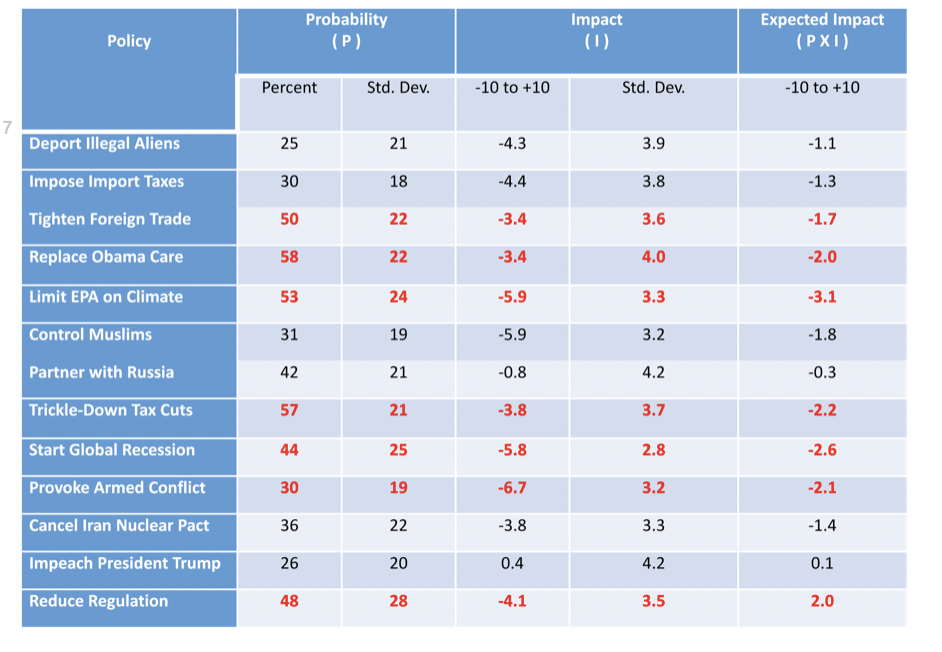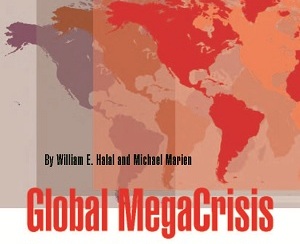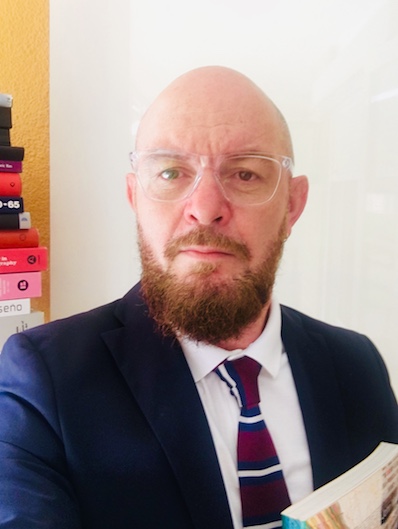I am grateful to the many people who responded to our request for rating topics:
Ted Gordon
Clayton Rawlings
Carlos Scheel
Owen Davies
Dale Deacon
Fadi Bayoud
Jess Garretson
Gabrielle Rizzo
Young-Jin Choi
Peter King
Jonathan Kolber
Dennis Bushnell
Jacques Malan
Bob Finkelstein
Linda Smith
Margherita Abe
Hassan Rashidi
Amy Fletcher
Angus Hooke
The votes show that the winning topic is – Redesigning Capitalism.
Our initial framing of this study is shown below. Please note that our analysis on Redesigning Capitalism is simply Round 1 of what is likely to be three-round study. The trends below represent the type of trend analysis TechCast has pioneered for framing a topic. Our next blog will present a more complete analysis including comments from our readers, and it will also invite estimates to the questions posed. The third round will conclude with final results of the survey and conclusions.
It’s interesting to see this as a strategic version of “action research.” This type of “strategic action research” uses simple but effective collective intelligence to provide the best possible answers to tough strategic questions. More than just seeing the results, the transparent nature of our process allows readers to participate and to better understand the method as it unfolds.
I invite all readers to send any corrections, additions, comments, etc. on this background analysis to Halal@GWU.edu. Please also advise if you think we should pose other questions for the TechCast community to answer.
Thanks for your participation. Get ready to learn the likely form of the “New Capitalism” in the coming issues of Bill’s Blog.
The TechCast Project
George Washington University
Background Information on Redesigning Capitalism
The financial crisis of 2000 and 2008 and the 2020 pandemic raised serious doubts about the failings of capitalism. These economic collapses, climate change, gross inequality and other threats making up the “Global MegaCrisis” have shattered confidence in what Francis Fukuyama proclaimed as “The End of History” – the fall of communism and the triumph of capitalism and democracy.
A variety of voices think this could become a “collapse of capitalism,” roughly like the “collapse of communism,” and caused by the same inability to adapt to a changing world. Nobel economist Joseph Stiglitz wrote, “The 2008 financial collapse may be to markets what the Berlin Wall was to Communism.” Communism could not meet the complex demands of the Information Revolution, and now capitalism seems to be failing to adapt to the Global MegaCrisis.
In response, corporations are making the transition to a quasi-democratic form of business that focuses on forming collaborative partnerships with employees, customers, business partners, and the public as well as shareholders. The Business Roundtable’s announcement that firms should serve all stakeholders is truly historic. The New York Times called it a “watershed moment … that raises questions about the very nature of capitalism.” If done well, this broader form of business could go beyond social responsibility for doing good to become a competitive advantage.
To put this in perspective, consider the three models in the figure below. The profit-centered model is traditional, while corporate social responsibility (CSR) has tried to shift the focus to stakeholders over the past decades, without much success. The problem is that CSR is usually considered philanthropy and often ignores the need for profitability, making it the mirror opposite of the profit model.

In contrast, the “corporate community”, or “collaborative enterprise,” model goes beyond CSR to form a more productive system that benefits all interests. The key lies in making stakeholders working partners, rather than recipients of benefits.
The fact is that the social interests in any business – workers, customers, partners and the public – are roughly similar to the role of investors. All these groups invest resources, incur costs and gain benefits, much like shareholders. Any enterprise is basically a socio-economic system composed of key stakeholders that perform crucial functions. Focusing on only one function distorts the performance of the entire system. It makes as much sense to think of capital as the only goal as it would to say the brain, heart or lungs are the most important part of the human body. From a more realistic systems view, the need is to integrate all these resources into a workable whole. That is precisely what any good executive must accomplish to build a viable enterprise. Here’s how Bonville Power harnessed the knowledge of its stakeholders:
“We used to treat outsiders (labor unions, the public, regulators) as a nuisance. After working with them, our adversaries helped us find creative solutions to intractable problems. Public involvement is a must for today’s managers. Conflict is unavoidable; the only choice is whether to dodge it or harness it.”
A democratic form of enterprise would spur cooperation throughout the social order, relieve government of burdensome oversight responsibility and reduce the risk of market volatility. Because business firms would be controlled by their stakeholders, they would “internalize” social impacts and reduce government regulations and bureaucracy. This would also reduce the risk of stock market drops, labor conflict, cutthroat competition, swings in consumer loyalty, unexpected regulatory change, and other disruptive factors.
These gains would come at the cost of overcoming the obstacles noted in the Cons below. Profit is an easily measured, traditional goal, so displacing it will meet resistance from many, primarily investors and Wall Street. A quasi-democratic organization can be messy and it requires political skills that many business leaders lack.
The transition to stakeholder collaboration will be difficult, therefore, it may take years, and there will always be some firms that remain profit-centered. But the coming of collaborative enterprise is well underway even now and it will transform economic systems.
It’s important to note that stakeholder collaboration in business is a special case of the Third Principle in our earlier formulation of Global Consciousness:
Principle 3. Collaborate With Stakeholders to Better Serve Collective Interests.
This more powerful and universal statement can be applied to all institutions. For business, it means serving social interests as well as economic goals. In government, it would carry democracy to the grassroots and better serve towns, cities and nations. It could also resolve the present conflict in healthcare between profit and multi-million dollar executive pay versus the welfare of patients and communities. Religious organizations, such as the Catholic Church, would then temper the hierarchical power of the priesthood with the influence of their members.
That’s what makes this study of such great value that you should want to consider it carefully and apply the concepts everywhere. This is a definitive analysis of the changing role of business, government and all other institutions.
Framing the Forecast
In 2018, the TechCast Global Brain Trust of experts estimated a roughly 30 percent probability of this historic change in the next decades. They also estimated a big positive impact, which highlights the great potential such a change could present.
Events have change so dramatically that we can now create a new estimate for 2020 and establish a trendline for this seminal change. Looking over the trends below, I would guess the probability will prove to be far higher, most likely over 50%.
Here’s how we frame the questions for this survey today :
“Please estimate the probability that the mainstream of business in industrialized nations shifts to collaboration with workers, customers, governments, and other stakeholders over the next several years.”
“Please estimate the impact this would have on society as a whole. (from -10 Catastrophic to +10 Excellent.”
I invite readers to improve on these two research questions, suggest others and provide any justifications.
TREND ANALYSIS
PROS: TRENDS DRIVING THE NEW CAPITALISM
Progressive Business Is Going Democratic A robust leading edge of progressive business firms and practices have long thrived around the world: Johnson & Johnson, Nucor Steel, IKEA, the Mondragon in Spain, labor participation in Germany, self-management in France and Japanese corporations have practiced various forms of collaborative management for years. Studies by the consulting firm, McKinsey, conclude “shares of companies that connect effectively with all stakeholders outperform competitors by two percent per year on average.” Jack Welch, the former CEO of General Electric, acknowledged “Shareholder value is a result, not a strategy. Your main constituencies are your employees and customers.”
Institutional Investors Laurence D. Fink, founder and CEO of BlackRock, which holds US$6 trillion in investments, told 1000 of the world’s largest corporations: “Society is demanding that companies… serve a social purpose… every company must not only deliver financial performance, but also show how it makes a positive contribution to society.” While Jana Partners and CalSTRS, the California retirement system, issued a similar declaration: “… we believe the long-term health of society, our economy, and the company itself, are inextricably linked.” Jeffrey Sonnenfeld, a senior associate dean at the Yale School of Management, said. “It is huge for an institutional investor to take this position across its portfolio.‘‘ He said he’s seen “nothing like it.”
United Nations The UN Global Compact is an association of businesses committed to universally accepted principles in human rights, labor, environment, and anti-corruption. The association includes over 13,000 organizations from more than 145 countries currently.
Coop Movement The International Co-operative Alliance represents the global cooperative movement, with 284 organizations across 95 countries
B Corporations This group of firms focuses on solving social and environmental problems. Unlike traditional businesses, they meet comprehensive and transparent standards of social and environmental performance, institutionalize stakeholder interests, and build a collective voice through a unifying brand. Amy Prosenjak, a B corporation owner, said “Everybody has to win.”
Benefit Corporations The Benefit Corporation goes beyond the B corporation to make its status legal. California and another 26 American States recently enacted laws requiring Benefit Corporations to provide a “public benefit,” be governed to serve all stakeholders, assess social and economic performance annually, and to operate transparently.
Business for Social Responsibility This global network of 250+ companies, thought leaders, and stakeholders shares best practices.
Business Culture These concepts are now practiced among progressive companies and taught at business schools. Recent surveys show that only five percent of CEOs now say they are “mainly focused on profits and not distracted by social goals.” Other surveys show that more than 80 percent favor stakeholder collaboration.
Fortune 500 Over 80% of Fortune 500 companies now publish Corporate Social Responsibility reports, covering issues like governance, community and partnerships. The editor of Fortune said: “an ever-growing group of business leaders … are building efforts to address social problems … Companies are moving beyond fuzzy notions like sustainability and corporate citizenship to making meaningful social impact central to how they compete.”
Business Schools One of the most popular courses at the Harvard Business School is “Reimagining Capitalism.” Enrollment increased from 28 students when the course started seven years ago and now numbers 300 students each semester.
Public Attitudes A study by Deloitte finds that 60-80 percent of Millennials want to work for companies with a strong social purpose. A poll found that 51 percent of Americans age 18-29 do not support capitalism and only 42 percent think it is a good economic system.
CONS: OBSTACLES OPPOSING THE NEW CAPITALISM
The obstacles are enormous, of course. Change is hard, so bold leaders are needed to take on this difficult challenge.
Tradition Some countries have cultures that are committed to traditional forms of “capitalism” focused on profit and the rights of shareholders, and they are likely to resist the difficult changes that are involved.
Investor Rights Shareholders legally own a corporation, which tends to stress the central role of profit. In fact, shareholders can sue if not satisfied that management is doing everything within reason to maximize their profit. However, some corporations are learning to fight back and are in turn suing their shareholders.
Power of Wall Street The possibility of takeover has traditionally forced firms to focus on short-term gains to avoid losing capital as their stock drops under threat of being absorbed by another company. The collaborative enterprise offers the possibility of resolving this problem by having stock held by stakeholders who are interested in the long term.
Democracy is Messy Collaboration is more time-consuming and difficult than autocratic leadership, and it may fail. The intention may be good, and some firms may thrive, but there is a serious risk of wasted time, endless conflict, and rising costs with democratic processes.
New Generation of Leaders Needed Few present business leaders seem able to make this change. A new generation of executives less wedded to tradition may be required to spearhead the transition.
Requires Political Skill Forming working relationships is inherently a political act, so managers must adapt by developing political skills. This requires a more challenging form of “political” leadership and depends on stakeholders being receptive to partnering.
Be sure to tell your friends and associates to sign up for this blog at www.BillHalal.com.
Sincerely, Bill
William E. Halal, PhD
The TechCast Project
George Washington University








